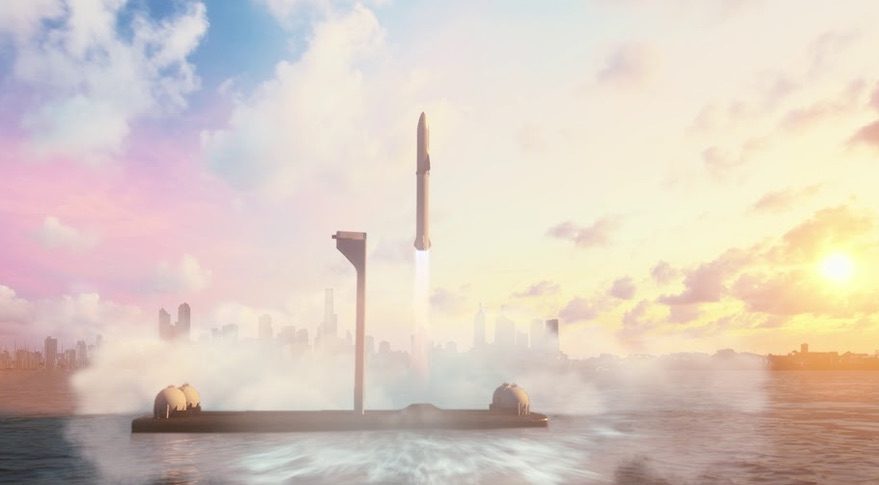White House officials recommends slow approach to high-speed suborbital transportation
White House officials recommends slow approach to high-speed suborbital transportation

WASHINGTON — A White House official said June 22 that while the administration supports commercial space transportation, companies with ambitions of high-speed point-to-point suborbital spaceflight should focus on near-term goals instead.
At an online meeting of the Federal Aviation Administration’s Commercial Space Transportation Advisory Committee (COMSTAC), Scott Pace, executive secretary of the National Space Council, reaffirmed the White House’s support for the commercial space industry in general and commercial space transportation in particular.
“The creation of a lightly regulated entrepreneurial space industry, supported by regulation that adapts to changes, is really a model for the rest of the world as they decide how they want to take advantage of space,” he said.
Pace largely gave an overview of the various space policy directives issued by the Trump administration to date, as well as ongoing work to update the overall National Space Policy, last revised by the Obama administration in 2010. A couple more policy directives or executive orders, like the one issued April 6 regarding space resources, are “in the pipeline” but not yet ready for release. “Stay tuned, as we have a couple other policy directives and announcements gearing up,” he said.
It’s unlikely those future announcements will address one potential commercial space market, point-to-point suborbital spaceflight for transporting cargo or people. Asked about the prospects of that market by COMSTAC members, Pace argued it didn’t appear to be one that would emerge for years to come.
“I still see that as somewhat speculative and somewhat over the horizon,” he said. “I see us working right now on trying to get the suborbital market up, running and sort of stabilized. I think people look forward to the possibility of point-to-point passenger and cargo travel, but right now just getting routine suborbital access to space and pushing hard on the unmanned hypersonic and military applications is where the action is.”
“Maybe it’s not too soon to think about,” he added, “but I still think that’s a bit farther out until I see how the initial market settles out.”
Those comments appear to be directed in particular at Virgin Galactic, which has made clear since its merger last year with holding company Social Capital Hedosophia its long-term interest in high-speed passenger spaceflight. Company documents have identified point-to-point transportation, using systems derived from its SpaceShipTwo suborbital vehicle, as the “ultimate application” of that technology.
While its SpaceShipTwo vehicle has yet to enter service on suborbital spaceflights — the vehicle made its most recent, unpowered test May 1 from Spaceport America in New Mexico — Virgin Galactic still has point-to-point travel as a long-term goal. The company announced May 5 it signed a Space Act Agreement with NASA to support research on such vehicles.
That agreement will allow the company to work with NASA experts “to make quicker progress on key areas that are the long-lead technology areas for a high-Mach vehicle,” said George Whitesides, chief executive of Virgin Galactic, in an earnings call the day the agreement was announced.
However, Virgin Galactic is not the only spaceflight company with point-to-point ambitions. SpaceX unveiled plans in 2017 to use its next-generation launch system, now called Starship, to transport people across the planet. In that video, a vehicle took off from a floating platform in New York Harbor and landed on a similar platform just off the coast of Shanghai 39 minutes later.
The timeline for such flights is not clear, but the company is working on one key supporting technology needed for such services. SpaceX recently published job openings for offshore engineers, seeking people to help “design and build an operational offshore rocket launch facility.”
Musk, in a June 16 tweet confirming the job openings, said, “SpaceX is building floating, superheavy-class spaceports for Mars, moon & hypersonic travel around Earth.”
Regulatory reforms
Earlier in the COMSTAC meeting, FAA officials provided an update on ongoing regulatory activities, including a “streamlining” of launch and reentry regulations. The draft version of those new regulations, published in April 2019, generated significant criticism from companies who believed the rules were instead a step backwards.
After a public comment period for the draft rules closed in August, the FAA Office of Commercial Space Transportation (AST) has been working to review the comments and incorporate changes into the final rule. “We are currently in the ‘sausage-making’ stage of the review cycle,” said Wayne Monteith, FAA associate administrator for commercial space transportation, at the meeting.
That work is nearly complete. The FAA still plans to publish a final rule in the fall, likely in September, which means the rule will soon go to the Office of Management and Budget (OMB) for a required review before publication.
“This was a challenging task, but I am pretty impressed from where we’ve come” from the draft rule, said Lirio Liu, executive director for the Office of Operational Safety within AST. “It has extensively changed so that it is actually reflective of comments and allows us to do the intent of the national space policy,” which called for a streamlining of launch regulations in Space Policy Directive 2 in 2018.
“I am confident it is absolutely going to be better than the regulations that we operate under today,” Monteith said.
Comments
Post a Comment